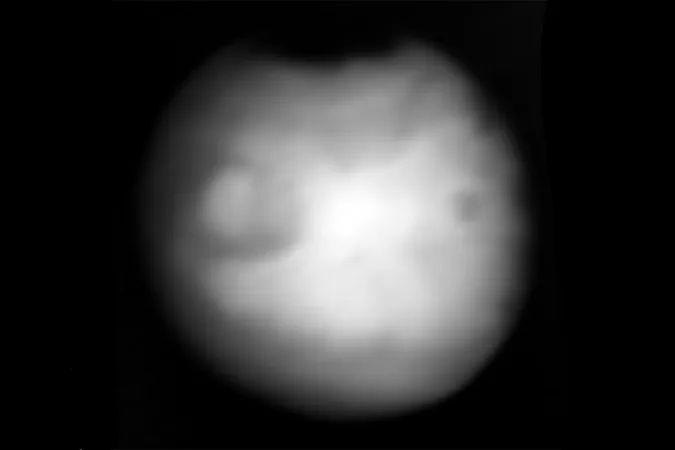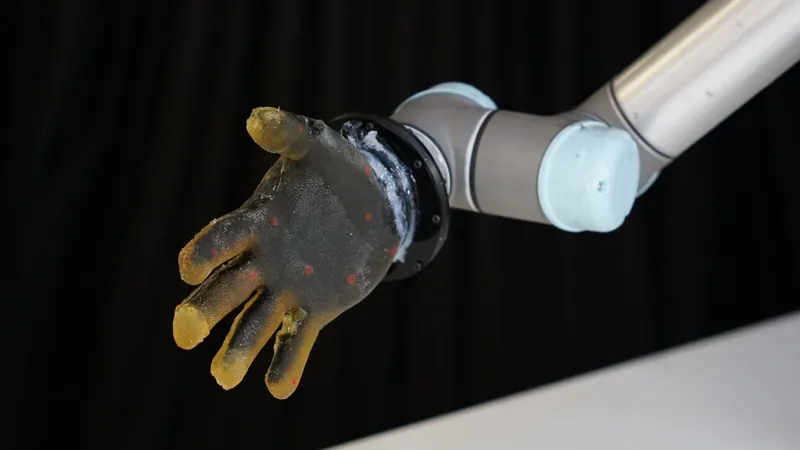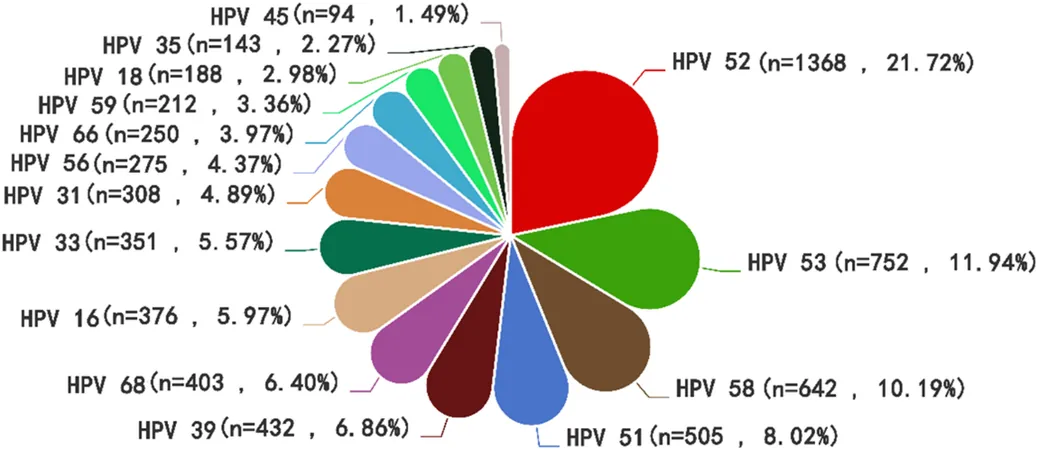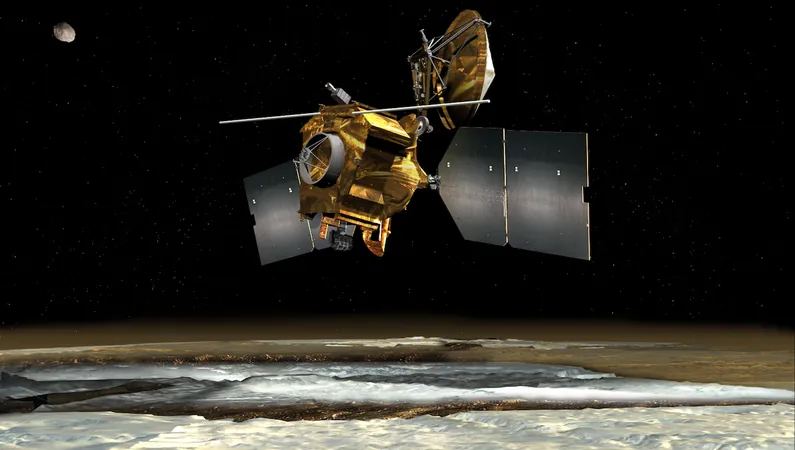
Unveiling Mars: A Cosmic Glimpse Reveals a Mysterious 'Face'!
2025-05-15
Author: Wei Ling
An Unexpected View of Mars
Prepare for a cosmic revelation! As the Europa Clipper spacecraft embarks on a journey to explore Jupiter's icy moon, it has turned its gaze back to the Red Planet. On March 1, 2025, during a close flyby at just 550 miles above Mars, the spacecraft captured stunning infrared images that are bound to stir the imagination.
Pareidolia: The Mystical 'Face' on Mars
At first glance, one might think they've stumbled upon an extra-terrestrial face staring back from the Martian surface! This eerie phenomenon, known as pareidolia, tricks our brains into recognizing faces in random patterns. The image shows a blurry visage with one large eye on the left and a smaller one on the right, evoking a sense of mystery akin to that found on the Moon's Crater Albategnius.
Infrared Imaging: A Scientific Marvel
But what does this all mean? The grayscale images taken by Europa Clipper reveal temperature variations across Mars: bright areas are a toasty 32°F, while darker regions plunge to a bone-chilling -190°F! The northern polar cap, a frigid expanse, captures the extreme conditions of our neighboring planet.
Why Mars? The Gravity Assist Explained!
So, why did a spacecraft headed for Jupiter stop by Mars? The answer lies in the clever use of gravitational pull—a technique known as 'gravity assist.' By harnessing Mars' gravity, the Europa Clipper saves fuel and adjusts its path, speeding up its journey to the gas giant. Mission scientists are all too familiar with the challenges of navigating the vastness of space, and this flyby serves dual purposes.
Testing the Cutting-Edge Camera
During its brief encounter, the Europa Clipper put its infrared imaging system, the Europa Thermal Imaging System (E-THEMIS), to the test. For 18 minutes, the spacecraft captured over 1,000 stunning images, which were sent back to Earth on May 5. The goal? To ensure that everything works flawlessly for future explorations.
Onwards to Europa: The Quest for Life!
Launched from NASA’s Kennedy Space Center on October 14, 2024, the Europa Clipper is on an epic 2.9 billion-kilometer journey, with its next gravitational assist set for Earth in 2026 and arrival at Jupiter scheduled for 2030. Once there, it will conduct 49 flybys of Europa, where scientists are fervently searching for signs of life in its hidden ocean beneath icy crust. With carbon detected on Europa by the James Webb Space Telescope, the excitement grows!
Mapping the Heat of Europa
As the mission unfolds, the thermal imaging capabilities of the Europa Clipper will not only identify temperature variations on the moon’s surface but also seek out regions where the subsurface ocean may be close to breaking through. Planetary scientists hope to measure the temperatures of surface features that could reveal their geological activity.
If Europa proves to be an active world, those warmer fractures may just hold clues to unraveling the mysteries of life beyond Earth.





 Brasil (PT)
Brasil (PT)
 Canada (EN)
Canada (EN)
 Chile (ES)
Chile (ES)
 Česko (CS)
Česko (CS)
 대한민국 (KO)
대한민국 (KO)
 España (ES)
España (ES)
 France (FR)
France (FR)
 Hong Kong (EN)
Hong Kong (EN)
 Italia (IT)
Italia (IT)
 日本 (JA)
日本 (JA)
 Magyarország (HU)
Magyarország (HU)
 Norge (NO)
Norge (NO)
 Polska (PL)
Polska (PL)
 Schweiz (DE)
Schweiz (DE)
 Singapore (EN)
Singapore (EN)
 Sverige (SV)
Sverige (SV)
 Suomi (FI)
Suomi (FI)
 Türkiye (TR)
Türkiye (TR)
 الإمارات العربية المتحدة (AR)
الإمارات العربية المتحدة (AR)